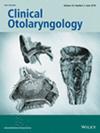Optimising Early Intervention: A Retrospective Study on the Role of Hyperbaric Oxygen Therapy in Enhancing Hearing Recovery for Sudden Sensorineural Hearing Loss
Abstract
Purpose
This study aimed to evaluate the efficacy of hyperbaric oxygen therapy (HBOT) as an adjunct to corticosteroids in the treatment of sudden sensorineural hearing loss (SSNHL) and to determine the optimal timing for HBOT initiation, considering the severity of initial hearing loss.
Methods
A retrospective review was conducted on 128 patients diagnosed with unilateral SSNHL who received corticosteroids and HBOT. The inclusion criteria were the initiation of steroid treatment within 14 days and HBOT within 30 days of SSNHL onset, with at least five HBOT sessions completed. Audiometric evaluations were performed pre- and post-treatment to assess hearing gains. Statistical analyses, including logistic regression and ROC curves, were utilised to identify factors influencing hearing recovery.
Results
The results showed that 72.7% of patients experienced significant hearing improvement. Early initiation of HBOT within 12.5 days of onset was associated with better hearing outcomes. Multivariate analysis and sensitivity testing further confirmed that HBOT timing was the most robust predictor of hearing gain, independent of baseline hearing severity.
Conclusion
Early HBOT initiation, particularly within 12.5 days, enhances hearing recovery in SSNHL patients. These findings support the use of HBOT as a valuable adjunctive treatment and underscore the need for standardised protocols in future studies.


 求助内容:
求助内容: 应助结果提醒方式:
应助结果提醒方式:


